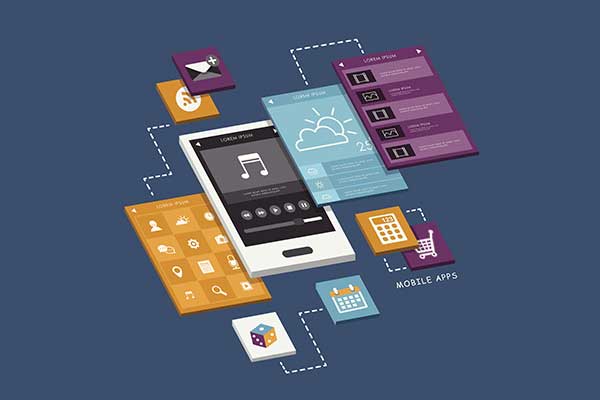Planning with a Purpose: 3 Reasons Why Agencies Created Native Apps

Mobile. It’s here, and it’s here to stay!
Agencies in all areas of government meet real world needs through mobile products. Creating effective mobile products requires planning, however. Agencies who have created native apps outlined three areas they considered in the mobile development process: strategy, business requirements and measuring value.
Strategy
Before creating a mobile product, you must analyze how it will fit into your agency’s strategy. Not only is this information essential in justifying the need for mobile, it also will help quantify the application’s value when you examine mobile metrics.
When Sarah Herrmann, Digital Communications Manager for the American Battle Monument Commission (ABMC), implemented a mobile strategy, she created specific goals for ABMC’s products. Since ABMC manages overseas cemeteries and memorials, each app needed to:
- Serve as a tour guide for those who visit cemeteries and memorials
- Provide enough details so that visitors who aren’t able to visit in-person can still benefit
These application objectives align with ABMC’s strategic goal to “provide an inspirational and educational visitor experience through effective outreach and interpretive programs.”
Since the application objectives support one of the agency’s strategic goals, Herrmann can easily state why this application is beneficial. Other agencies have used native applications effectively for crowdsourcing projects.
Business Requirements
Your agency’s business requirements will dictate your mobile development process. Many government agencies have limitations and restrictions that private companies do not. Whether they are privacy restrictions, design specifications, or 508-compliance features, the project managers must be able to clearly communicate those requirements to developers.
Will Sullivan, former Director of Mobile for the Broadcasting Board of Governors (BBG) and current Innovation Specialist at 18F , understood that BBG’s native applications needed certain capabilities. BBG has native apps for all five of BBG’s entities. Although each application is targeting a different audience, they have similar business requirements. One central business requirement: keep the app as small as possible, Sullivan said. Since BBG has a worldwide audience, the agency optimizes their applications for low bandwidth.
“We try to build the applications as small as possible, which is difficult when we’re supporting many languages,” Sullivan said. “When you have an Android phone with maybe 500 MB storage, downloading a 50-70 MB app is a huge issue for people. Then, on top of that, the actual act of downloading is another issue. In some of these countries, people pay $20-$30 for a megabyte of data. So a ‘free’ application that’s 50 MB is $100 to them.”
Value

The U.S. Immigration and Customs Enforcement (ICE) Homeland Security Investigations (HSI) special agents solicit help from the public to locate fugitive child predators with the Operation Predator smartphone app and social media outreach. This app fits into HSI’s work in combating child exploitation.
Since Operation Predator launched for iPhones in September 2013 and Android devices in Oct 2014, the app has assisted in 6 arrests on charges related to child exploitation. Additional tips have also come from social media. Between the app and social media, the public assisted in roughly a dozen arrests of fugitive child predators that special agents previously could not locate.
Another example is National Oceanic and Atmospheric Administration (NOAA) CrowdMag application, which collects and sends magnetometer data to NOAA researchers. Through the data, they have created the world’s first geomagnetic field model developed entirely using crowdsourced data.
Examining the outcomes of your mobile product is critical in determining the success or failure of your mobile product and determining future paths for mobile development at your agency.
Mobile is increasingly important to agencies, but great mobile products require intentional planning throughout the development process. By delving into strategy, articulating business requirements, and measuring value, agencies have made mobile products that benefit their audiences and meet their 21st century needs.

